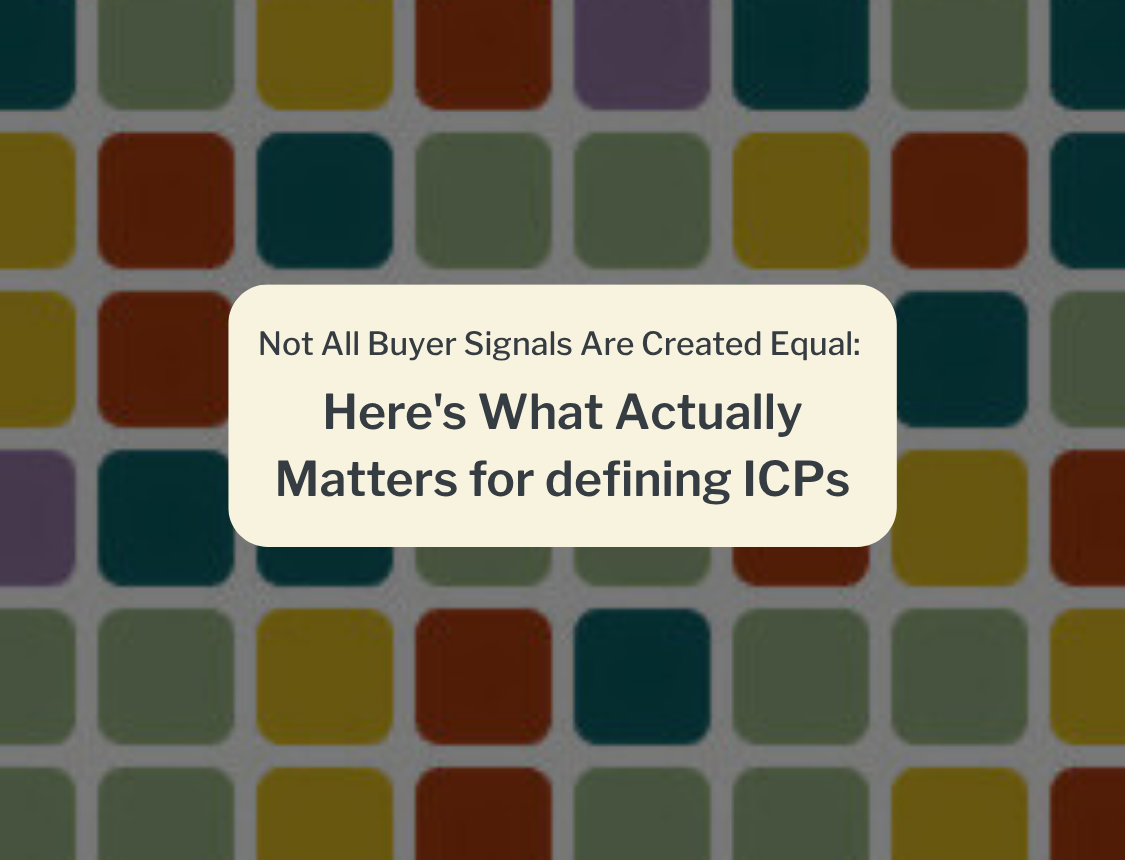
I’ve spent half my 30 year software career in marketing and half in sales/business development. My focus the past year has been on helping B2B SaaS company GTM teams with a shared and agreed understanding of their ICP Segments powered by business efficiency metrics (e.g., CLV, NRR, etc.) and unified target account lists (TALs). Our belief is that GTM teams lack a an operational layer that helps them bridge the gap between SaaS Finance Metrics (CLV, NRR, ARR, ADS, etc.) with GTM planning and execution.
One area that I see due to be reimagined is sales territory planning. The traditional bottoms-up approach—where individual AEs pick their target prospect accounts and argue for why those accounts are their focus for next quarter/year at QBRs —is deeply flawed. Please note that it’s 100% not their fault as their orgs haven’t been giving them the essential insights to empower them to take a more data-driven approach. The current method often leads to misaligned priorities, wasted resources, and missed opportunities.
The root of the problem lies in the disconnect between sales and marketing, coupled with a lack of strategic focus on ICP-powered high-value accounts. What’s needed is a major shift: a unified target account list (TAL) powered by customer analytics. Marketing should be providing GTM teams with the foundational business metric-informed ICP segments that enable the creation of fact-based, quantitative ICP vs. the squishy, intuition-based traditional ICP we see today. A unified TAL not only aligns sales and marketing but also drives efficiency, enabling sellers to focus on the accounts most likely to generate significant business value. 🚀
The Problem with the Current Approach
Most B2B SaaS companies rely on a bottoms-up territory planning process where reps define their target accounts. While this might seem empowering, it often results in several challenges:
- Misaligned Priorities: Sales reps prioritize accounts they feel comfortable with rather than those aligned with the company’s ideal customer profile (ICP).
- Inefficient Resource Allocation: Time and effort are wasted on low-value accounts that don’t drive significant revenue.
- Missed Opportunities: High-value ICP accounts are overlooked because they’re not part of a rep’s immediate focus.
This approach leaves companies vulnerable, with no clear alignment between sales and marketing, and ultimately hinders revenue growth.
The Case for a Unified Target Account List
A unified TAL is a single, agreed-upon list of high-value accounts that sales and marketing teams rally around. Built using data-driven ICP segments powered by business efficiency metrics (CLV, NRR, NPS, etc.), the new unified TAL prioritizes accounts based on business metrics like customer lifetime value (CLV), win-rates, net recurring revenue (NRR), deal velocity, profitability, and the total addressable market (TAM). 🔢
Why It Works:
- Alignment: Sales and marketing are unified around a shared list of high-value segments and the accounts in those segments.
- Efficiency: Sellers focus their time on the accounts in the segments that are most likely to close and drive long-term company value.
- Data-Driven Decisions: Analytical insights guide account selection, removing guesswork from the process.
The Marketing Advantage: By focusing on the same data-driven ICP segments, marketing can:
- Marketing can build deeper and more on 🎯 campaigns that resonate with high-value segments/accounts.
- Optimize demand generation efforts on those ICP segments for maximum ROI.
- Create personalized, account-specific content that complements sales efforts.
- Enable sellers with the right messaging, case studies, and tools they need to show up as subject matter experts and consultative agents.
How ICP Segments and Analytics Transform Planning
ICP Segments Defined: These are groupings of accounts based on business metrics and other important attributes (firmographics and technographics). By identifying your top-performing customer profiles, you create a framework for targeting similar high-value accounts.
Measuring ICP-focused GTM Execution: As the old adage goes, you cannot manage what you don’t measure; you must have ongoing visibility of your ICP-focused GTM execution. These insights will help ensure your GTM team is focused on executing against your TAL and seeing an increase of ICPs in your pipeline and closed-won accounts. 🧬
Efficiency in Action: When territories are built around ICP-aligned accounts, sales reps spend their time where it matters most, improving win rates and revenue outcomes.
Shift to Proactive Planning from Ad Hoc Bottoms Up:
- From Reactive to Strategic: Move from rep-driven territory planning to a top-down, data-backed approach.
- Leadership-Driven: Sales leaders set the strategy, ensuring focus on ICP-aligned accounts.
Driving Behavior Change with Incentives
Sales comp plans drive rep behavior. For a unified TAL to succeed, it’s critical to incentivize sellers to engage with and close high-value ICP accounts.
Aligning Incentives with ICP Focus:
- Reward Closing High-Value Accounts: Offer higher commissions or bonuses for deals within the TAL.
- Encourage Engagement: Incentivize reps to engage with high-value accounts, even before deals are closed.
Making It Stick: Ensure performance metrics and goals align with the TAL strategy, creating consistency across the organization.
The Benefits of a Unified Approach
- For Sellers: Streamlined focus, reduced frustration, and higher win rates. 💰
- For the Company: Increased revenue efficiency, better alignment between teams, and stronger market presence. 🚀
- For Customers: Tailored, value-driven engagement from sellers who understand their needs. 🙏
Overcoming Resistance to Change
Change can be challenging, especially for sales reps accustomed to autonomy in territory planning. Address objections by highlighting the long-term benefits:
- Improved Efficiency: Data-driven territories mean less wasted effort.
- Better Results: Focusing on high-value accounts leads to higher commissions and bonuses. 💸
- Success Stories: Share examples of companies that have successfully adopted this approach and seen measurable improvements. 📈
Conclusion: Build for the Future, Not the Past
The traditional bottoms-up approach to sales territory planning is no longer effective in today’s competitive and noisy B2B GTM landscape. By adopting a unified TAL powered by data-driven ICP segments, B2B SaaS companies can align sales and marketing, focus on high-value accounts, and drive meaningful revenue growth. 🚀
It’s time for sales and marketing leaders to take ownership of this transformation. The future of territory planning lies in a strategic, data-driven approach that challenges the status quo and positions companies for success in a rapidly evolving market. 🌐 📈
.svg)

